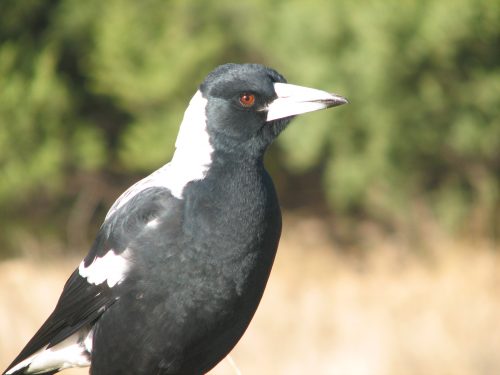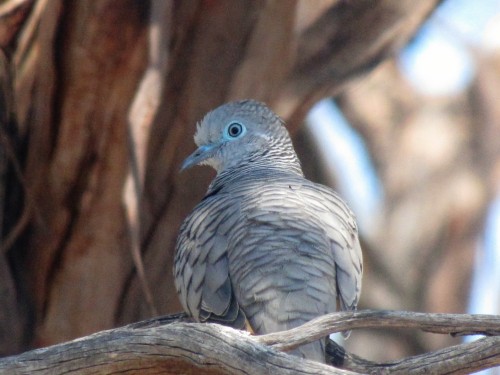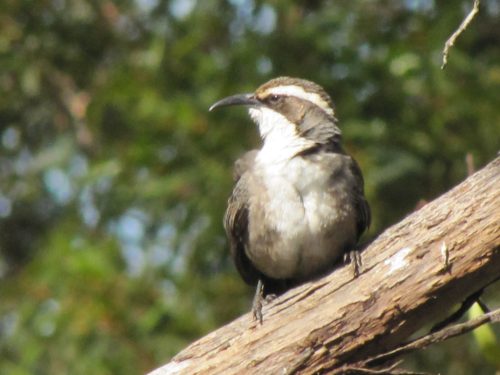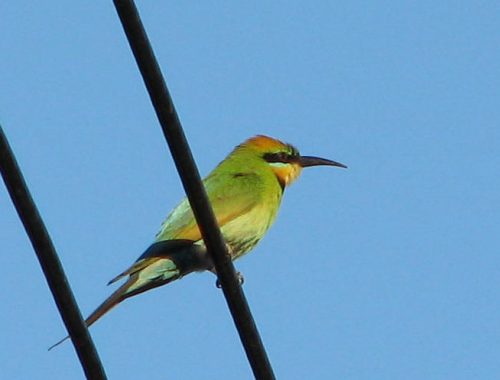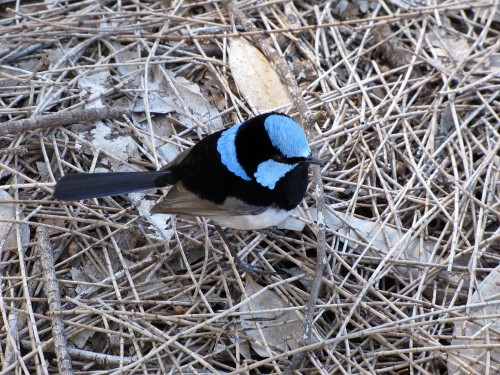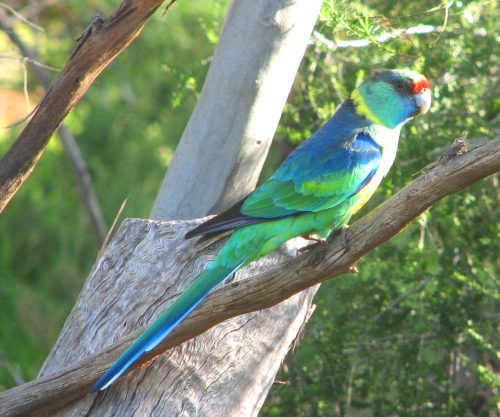Bird visitors at my window
Over recent days we have had both hot weather and lovely weather. This is normal for mid-summer days here in South Australia. For any new readers, I live about 80km or an hour’s drive south-east of Adelaide. Summer temperatures are usually in the high 20s or low 30s (30C is equal to 86F). During our worst summer days, temperatures can soar as high as 45C (113F), but thankfully such days only occur a few times every year.
Over recent weeks, many days have been in the mid-20s, which is very pleasant. On such days I love to open the large window next to my writing desk and let the fresh air into my office. If there is a breeze as well, that is an added bonus. One of the side benefits of this arrangement is the easy access to the bird life in our garden. I don’t even have to get up out of my chair to watch the birds. They come to me.
One one occasion, a friendly Australian Magpie (see photo above) sat on the rail of the pergola on this side of the house. He was in full view from where I sat. He suddenly stopped his carolling – our magpies are wonderful songsters – realised I was there and leant forward to get a better view of me. When I chatted with him, thanking him for the visit and the song, he answered me. How lovely.
On several occasions over the last week, one or two Peaceful Doves have alighted in the branches of a nearby tree, coo-ing persistently for about ten or fifteen minutes before moving on elsewhere in our garden. Their soft calls are very peaceful, so they are aptly named.
Only yesterday I had to stop what I was writing and look out to the garden bed next to my office window. A small family of White-browed Babblers were playing around in the bushes there, scolding each other as they scurried here and there. They were joined in this game by several New Holland Honeyeaters, their screeches usually a warning sign that a hawk or eagle is about. I think they were just having fun with the babblers. Even a couple of House Sparrows joined in the fun.
One species we don’t always have around is the Rainbow Bee-eaters, a delightfully named bird with their many-coloured plumage and their liking for catching and eating bees and other flying insects. I smile when I see one sitting in a nearby tree, banging a bee against the branch to dispatch the sting of the bee before swallowing it whole. Yesterday two or three could be heard out of my window while I worked, and later I saw two gliding overhead. Delightful birds, and we miss them when they fly north for the winter.
For many years we never had wrens resident in our garden. They were only occasional visitors from up the hill. Then five years ago on our return from an overseas trip, we were greeted by two Superb Fairy-wrens, one of two local species. They have been a resident breeding species in our garden ever since, producing several broods over those five years. They are so secretive about their nests that I have yet to find one. They have plenty of good bushes around to build their nests. From time to time they will also come by my office, their twittering, tinkling calls easy on the ears as they hop along near my office window, jumping up occasionally to snatch a fly or mosquito silly enough to hang around too long.
I don’t need to have the window open to hear our resident Mallee Ringneck parrots screeching outside as they fly from tree to tree, or over the house, or just sitting in a nearby tree wagging their tails joyfully. This tail wagging is probably a mating display. They have raised several broods successfully in recent years, their nest hollow being only 30 metres from my window.
What birds do you have in your garden?
Please tell me in the comments.
Good birding,
Trevor
Babbling no more
We always enjoy the White-browed Babblers when they visit our garden. I can’t claim that they are a resident species, but they seem to visit almost every day. They come in family groups of five up to more than a dozen, chasing each other around the bushes, scratching in the mulch and leaf litter or prising bark off various trees searching for a tasty spider, beetle or bug for lunch.
Yesterday, while going for a walk of The Estate (a 5 acre block) I found a dead babbler on the ground. On examination I found a bare, bloodied patch on the crown. I’m not sure what killed it, but no matter. It saddened me to see the demise of one of my favourite birds.
White-browed Babblers
White-browed Babblers are a resident breeding species in our garden. Hardly a day goes by without them coming quite close to the house and scratching around in the mulch or leaf litter under the trees. At other times they hop all over nearby trees, searching under the bark for ants, beetles and spiders.
Usually they come in a family group of between five and eight, sometimes more. they move through the garden in a loose flock, constantly calling to keep in contact with each other. They are quick movers, hopping quickly through the foliage, along the ground, across branches or wherever they are feeding at the moment. If one looses close contact with the rest it with fly low and fast to make contact with the group again.
Because they are always on the move I have had a challenge getting good photos of them. On this post I have two reasonable photos but they are still not great. I guess I’ll just have to keep on trying.
